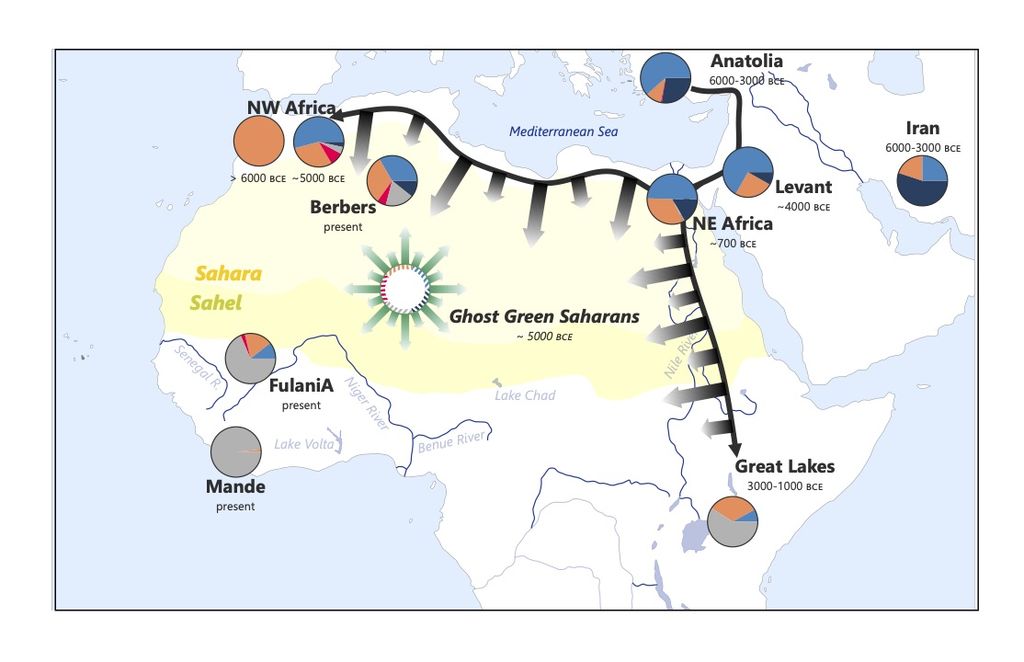
Echoes of ancient Saharan shepherds in the DNA of the nomadic Fulani population
An international research team, coordinated by Sapienza and the National Research Council (CNR-Ibpm) in Rome, conducted a study that sheds light on the role of climate change in the Sahara.
Using the information contained in the whole genomes of 43 individuals, and applying new high-coverage sequencing technologies, the researchers focused on the Fulani, the world's largest population of nomadic herders, currently settled throughout the Sahel belt, immediately south of the Sahara. Previous genetic and anthropological studies had suggested that this population had unique characteristics that set it apart from surrounding populations.
This new study, funded by the National Geographic Society and Sapienza University of Rome, investigated the nature of this specificity in order to also give it a historical and chronological characterisation through comparison with other modern and ancient genomes in the literature.
For the first time, a strong genetic affinity between the Fulani and individuals from Morocco dating back to the Neolithic period, previously only hypothesised on the basis of cultural elements and archaeological findings, was highlighted. Using an approach never before applied to the African continent, the joint analysis of modern and ancient genomes, it was possible to place the origin of the Fulani people in the last humid period of the Sahara (12,000 - 5,000 years ago, known as the 'Green Sahara'), when the present-day desert was a fertile, lush and inhabited land, making this population the key witness to one of the greatest climatic changes on the African continent.
"The approaches used in this study have also allowed us to shed light on the recent history of the Fulani, who are divided into two genetically distinct sub-groups due to socio-cultural factors that are not yet well characterised", says Flavia Risi, a PhD student in genetics and molecular biology at Sapienza University of Rome and co-author of the research.
The scenario that emerges from these results also suggests the existence of frequent contacts and migrations between populations in the "Green Sahara", forming a kind of "pan-Saharan" population, which then became definitively fragmented and divided with the desertification of the area, starting 5,000 years ago, but of which traces remain among the Fulani due to their particularly isolated lifestyle.
"The fertile environment of the Sahara certainly favoured extensive movement and contact between Saharan populations, and the results of this study help to draw a line between the ancient Saharan pastoralists and the modern Fulani", says Eugenia D'Atanasio, a researcher at the CNR Institute of Molecular Biology and Pathology (CNR-Ibpm) and study coordinator.
The study contributes to the current knowledge of human evolutionary history and its biodiversity, particularly on the African continent, a place that hosts the greatest genetic wealth of our species. These results also show that trans-Saharan movements and contacts are not just a recent phenomenon, but a very ancient historical reality, and finally confirm the role of major climatic changes (such as desertification) in human migrations.
"Africa, despite its cultural and genetic richness, is still little studied on a genomic level. In addition to information on the peopling of the Green Sahara, the genome sequences produced during this study represent an essential tool for the scientific community as they allow us to fill, at least in part, a major gap in our knowledge of human diversity", adds Fulvio Cruciani of the Charles Darwin Department of Biology and Biotechnology at Sapienza University of Rome and PI of the project.
References:
The genomic echoes of the last Green Sahara on the Fulani and Sahelian people - Eugenia D’Atanasio, Flavia Risi, Francesco Ravasini, Francesco Montinaro, Mogge Hajiesmaeil, Biancamaria Bonucci, Letizia Pistacchia, Daniel Amoako-Sakyi, Maria Bonito, Sara Onidi, Giulia Colombo, Ornella Semino, Giovanni Destro Bisol, Paolo Anagnostou, Mait Metspalu, Kristiina Tambets, Beniamino Trombetta, Fulvio Cruciani - Current Biology (2023) DOI https://doi.org/10.1016/j.cub.2023.10.075
Further Information
Fulvio Cruciani
Department of Biology and Biotechnology "Charles Darwin"
fulvio.cruciani@uniroma1.it
